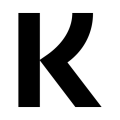When a venture-backed private company challenges a public company for market share, it often suggests that the emerging company is looking to disrupt a space dominated by a legacy player. But in the case of Klarna (a private company) vs. Affirm (a public company), the two buy now, pay later (BNPL) companies are at similar levels of maturity.5 In fact, the private company, Klarna, was established in 20056 and even went through a rebrand from being known as Kreditor to Klarna7 around two years before Affirm started in 2012.8
However, as both fintech companies grew,9 particularly toward the beginning of the pandemic-era when many tech-related stocks flourished,10 they took different paths. Affirm hit the public market first, with a January 2021 IPO that started with a $12 billion valuation and ended its first trading day at $23.6 billion.11 Meanwhile, Klarna continued to raise private capital, with a Series H in March 2021 that valued the company at $31 billion.12
Since then, however, both companies have suffered hits to their valuations, but remain relatively close to each other.13 Nonetheless, Klarna could soon join Affirm in the public market, as it reportedly hopes to raise at least $1 billion at a $15 billion valuation.14
Same core offering, different paths
Both Klarna and Affirm are centered around BNPL offerings, but the businesses diverge in several ways. For one, Klarna is based in Sweden, while Affirm started in San Francisco. As such, Klarna staked its ground more in the European market, while Affirm largely focused on the U.S. But now, there's some convergence as both companies try to expand internationally.15,16
Aside from markets, the companies also differ somewhat in the types of financing they typically offer and how they earn revenue. Klarna's average loan duration is around 40 days,17 while Affirm offers some longer-term loans, going as high as 60 months.18 While recent data is limited, Affirm's 2020 S-1 filing stated that its average on-balance sheet loan duration is six months.19
The companies also diverge in the sense that the largest share of Affirm's revenue comes from interest income,20 while Klarna makes most of its money from transaction and service revenue, which includes merchant fees.21
Still, there are many similarities between the two companies, and it's possible that they could converge in more ways in the future. As it stands, they're rather close in terms of revenue, with Affirm's most recent quarterly results showing $783 million in revenue22 versus $701 million for Klarna.23
Comparing market performance
Both Klarna and Affirm rapidly ascended in valuation around the time of Affirm's 2021 IPO,24 but since then, they've both gone through somewhat of a reset.
Klarna's peak valuation came in mid-2021, with a funding round that put the private company at $45.6 billion.25 About a year later, however, Klarna raised a down round that plummeted its valuation to $6.7 billion.26
During a similar timeline, Affirm's publicly traded stock spiked in late 2021 to a market cap of over $40 billion, before cratering to less than $3 billion toward the end of 2022.
However, both companies have seen some improvement since then. Since January 2023, Affirm has surged over 400%,27 while Klarna's Forge Price™ has also seen a big jump, rising around 100%.28
These differences, however, more so reflect Affirm starting 2023 from a lower point, rather than Affirm far exceeding Klarna in terms of overall size. Klarna's current Forge Price of $37.31 implies a $14.2 billion valuation,29 while Affirm's market cap is currently around $15.9 billion, so the companies remain on a fairly similar playing field.30
Forge + Yahoo Finance Data: A new lens on public vs. private fintech stocks
Thanks to the recently announced partnership between Forge and Yahoo Finance, investors can now closely monitor real-time private company prices like Klarna's Forge Price compared to fintech competitors in the public market like Affirm. These side-by-side comparisons could help investors spotlight changes, such as increases or decreases in value, that might occur as both companies try to navigate an uncertain economic climate.
What's next for Klarna vs. Affirm?
While both Klarna and Affirm have bounced back from the doldrums of 2022, they still both remain far below their 2021 peaks. Getting back to that point could be difficult in the near term, considering both of their businesses rely on consumer spending, which tariffs threaten.31 Affirm's stock price has also been under pressure in recent months.
That said, both companies could potentially benefit from the current economic situation, such as if consumers struggle to afford purchases upfront. Affirm has recently struck partnerships with key retailers such as Costco,32 while Klarna recently supplanted Affirm as Walmart's BNPL partner.33 This comes at a time when 25% of BNPL users in the U.S. are using the service to pay for groceries, up from 14% last year, according to a LendingTree survey.34
So, it remains to be seen if economic conditions push more consumers toward BNPL, or if it means that consumers pull back on non-essentials, which could hurt both companies. It also remains unknown if/when Klarna will get back to pursuing an IPO.





